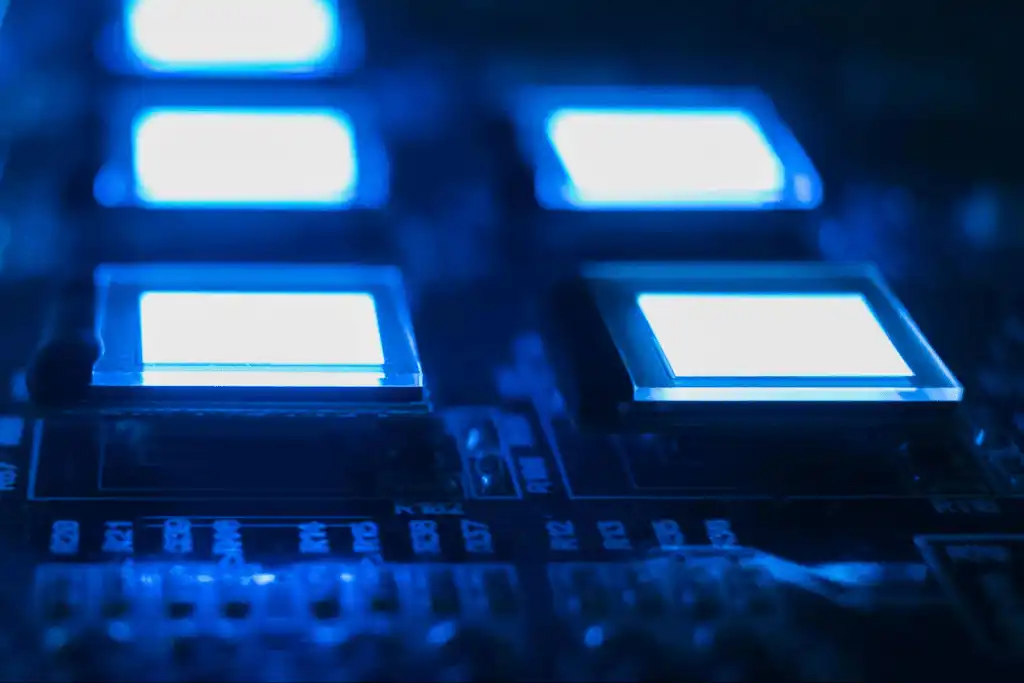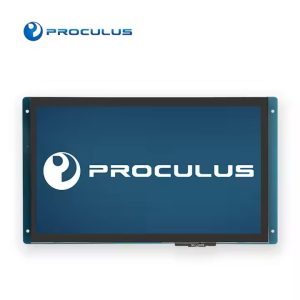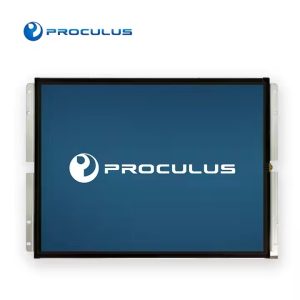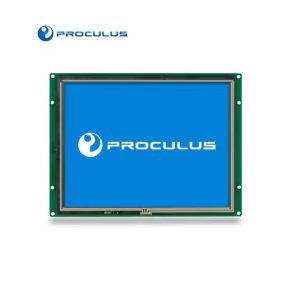What is an OLED display and how does it work: Find out
If you’ve ever asked yourself “What is an OLED display and why is it gaining traction across industries?”, you’re in the right place.
OLED (Organic Light-Emitting Diode) displays are redefining how visual interfaces are built, delivering superior image quality, power efficiency, and design flexibility compared to traditional display technologies.
Whether you’re designing compact wearables, medical equipment, or industrial control systems, understanding the principles behind OLEDs can help you make smarter choices for your next embedded project.
In this guide, we’ll break down how OLED displays work, what makes them different from LCDs, and why engineers and product developers are choosing OLED for modern, high-performance applications.
What is an OLED display?
An OLED (Organic Light-Emitting Diode) display is a type of flat-panel screen technology where each individual pixel emits its own light.
It’s made of organic materials that glow when an electric current passes through them, eliminating the need for a separate backlight.
This self-emissive nature allows OLED panels to deliver true blacks, ultra-high contrast, fast response times, and ultra-thin form factors.
OLEDs are available in both passive-matrix (PMOLED) and active-matrix (AMOLED) variants, the latter being more common in high-performance displays due to better control over each pixel.
Their unique construction enables new design possibilities, such as flexible and transparent screens, and contributes to their growing popularity in advanced display applications.
What is the difference between an OLED and a regular display?
The main difference lies in how each display generates light and displays images. In traditional LCD (Liquid Crystal Display) panels, a backlight shines through layers of liquid crystals and color filters to create visible images.
This backlight is always on, even for black pixels, which limits contrast and energy efficiency.
OLEDs, on the other hand, emit light directly from each pixel. This means pixels can be turned off entirely to produce perfect blacks and save energy. The lack of a backlight also enables thinner screens and more flexible form factors.
Additionally, OLEDs have faster refresh rates and better color accuracy across wider viewing angles. A point to note is that while OLEDs are more efficient with dark content, they consume more power than LCDs while displaying bright/white content.
In essence, OLED displays offer a more efficient, vibrant, and compact solution compared to conventional LCDs, especially in applications where display quality and space constraints matter.
Where is an OLED display typically used?
OLED displays are widely used in applications where visual clarity, design flexibility, and low power consumption are essential. Common use cases include:
- Consumer electronics: Smartphones, smartwatches, tablets, and televisions.
- Wearables and medical devices: Fitness trackers, portable monitors, and diagnostic equipment.
- Automotive systems: Instrument clusters, infotainment panels, and heads-up displays (HUDs).
- Industrial and embedded systems: User interfaces for control panels, compact devices, and handheld instruments.
- IoT devices: Smart home products and sensors with limited space and power budgets.
Their scalability and adaptability make OLEDs ideal for both compact consumer products and mission-critical industrial solutions.
OLED vs LCD
When comparing OLED and LCD technologies, the key differences stem from how each display produces light and renders images.
These technical contrasts have direct implications on performance, form factor, and use case suitability.
OLED displays are self-emissive, meaning each individual pixel generates its own light when an electric current is applied.
This allows OLED panels to display true black by turning pixels off entirely, resulting in extremely high contrast ratios and vibrant color reproduction.
Since they don’t rely on a backlight, OLED screens can be made ultra-thin, lightweight, and even flexible.
This design also enables faster response times, making OLED ideal for interfaces with animations, video, or rapid user feedback.
LCD displays, on the other hand, use a constant backlight (typically an array of LEDs) that shines through a layer of liquid crystals and color filters to produce images.
The liquid crystals act as shutters, modulating the light to create different colors and intensities.
Because the backlight is always on, even black pixels emit some light, which limits the overall contrast and makes blacks appear more like dark gray.
While LCDs are generally more affordable and have longer lifespans without risk of burn-in, they tend to be thicker, less power-efficient (especially with dark content), and offer narrower viewing angles.
How an OLED display works?

At the core of OLED (Organic Light-Emitting Diode) technology is a stack of organic thin films placed between two conductors. When a voltage is applied, electrons and holes recombine within the organic layers, causing them to emit light directly.
Each pixel is its own light source and can be turned on or off individually. This self-emissive nature eliminates the need for a backlight, which not only reduces power consumption but also improves display thinness, response time, and contrast. OLEDs typically consist of:
- Anode and cathode layers for electrical current;
- Organic emissive layers that generate red, green, or blue light;
- Substrates that support flexibility or rigidity depending on design.
This structure allows OLED displays to achieve fast switching speeds, deep blacks, and high contrast, making them ideal for responsive interfaces and space-constrained embedded applications.
What’s special about an OLED display?
OLED displays stand out for their pixel-level light control, which enables true black backgrounds, ultra-high contrast ratios, and stunning visual clarity, especially in low-light environments.
Unlike traditional LCDs, which rely on liquid crystals and a backlight, OLEDs produce their own light, resulting in thinner, more power-efficient screens.
They also offer exceptional viewing angles, with minimal color distortion even when viewed from the side, critical for devices used in dynamic or mobile environments.
Additionally, the flexible nature of OLED materials allows for curved, foldable, and custom-shaped designs, opening up new possibilities for product innovation.
OLEDs also respond faster than LCDs, with near-instant pixel switching, making them well-suited for real-time data displays, animations, or user feedback systems where timing and clarity matter.
Why engineers trust Proculus Technologies
OLED displays have excellent utility in consumer electronics where premium visuals justify the cost and complexity.
However, in embedded systems traditional LCD technology with smart interfaces might work better. This is because LCD has more utility when it comes to reliability, long lifespan, and development speed. These factors often outweigh pixel-perfect blacks.
Proculus Technologies has helped thousands of engineering teams streamline their display integration with robust, intelligent display solutions.
Our UART TFT LCD modules offer an easy-to-use, plug-and-play approach to building graphical interfaces without the need for a full OS or complex drivers.
With our UnicView Studio software, developers can create rich graphical UIs using drag-and-drop tools and deploy them to hardware with minimal coding.
Whether you’re building smart home appliances, industrial HMI, or medical equipment, Proculus modules deliver fast prototyping, reliable performance, and scalable production support.
Looking for a faster way to bring your UI to life? Check out Proculus UART TFT LCD Modules, intuitive, flexible displays designed for embedded systems.
Reduce your development time, simplify your hardware stack, and create professional-grade interfaces with ease.
Conclusion
OLED technology offers engineers a unique combination of aesthetic quality, functional performance, and system efficiency. From high-contrast visuals to form-factor flexibility, OLEDs unlock new design opportunities in embedded applications.
paired with intelligent display solutions, like the UART TFT LCD modules from Proculus, you can harness the best of both worlds: Cutting-edge display tech with minimal development complexity.
Let your interface do more, with less effort.

 English
English


